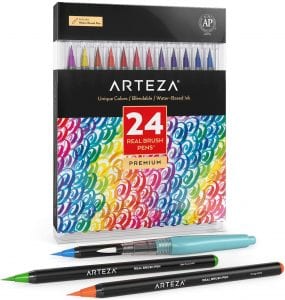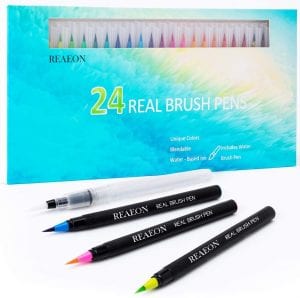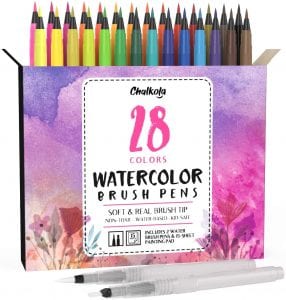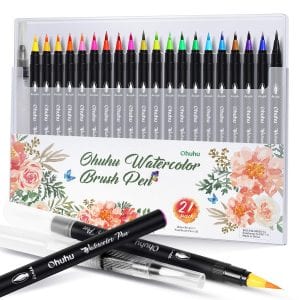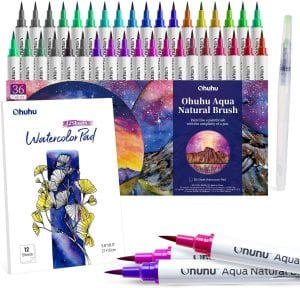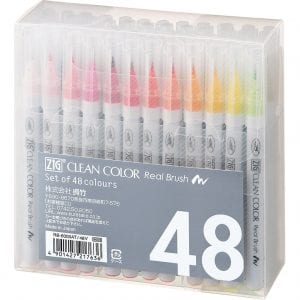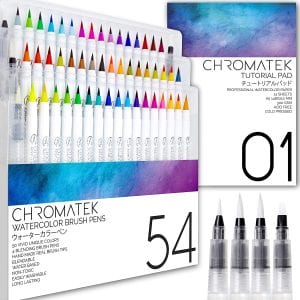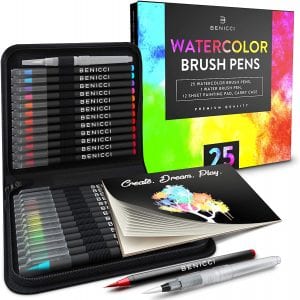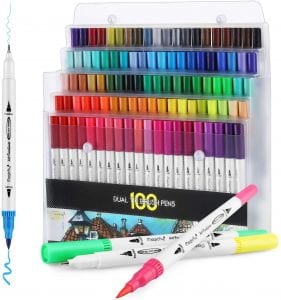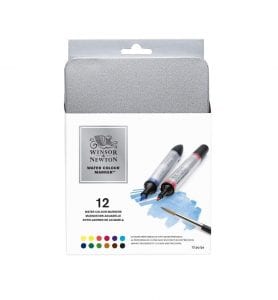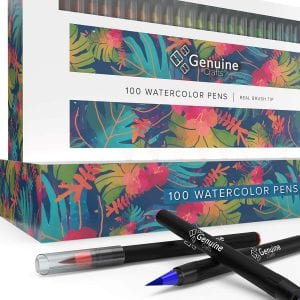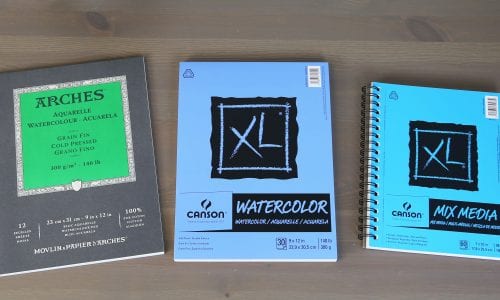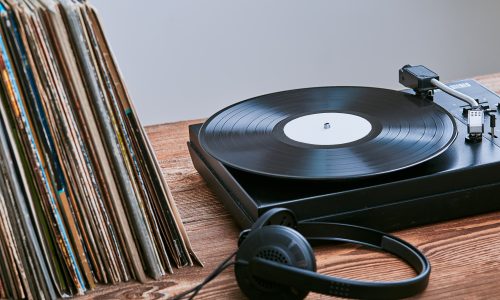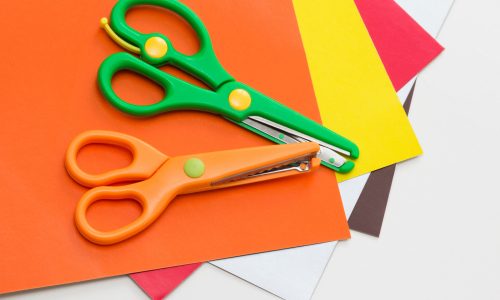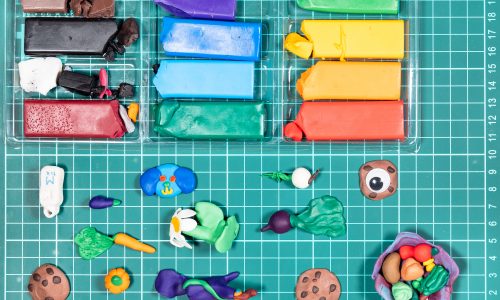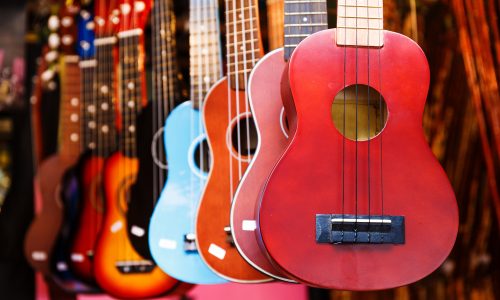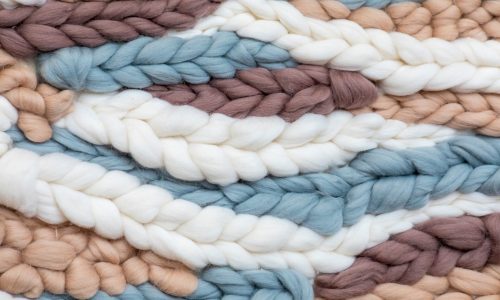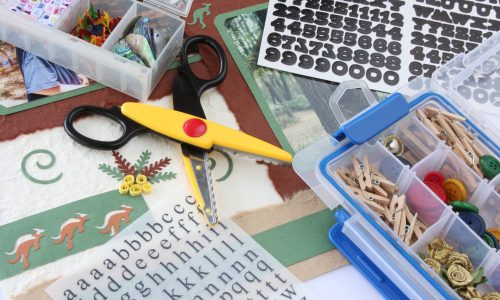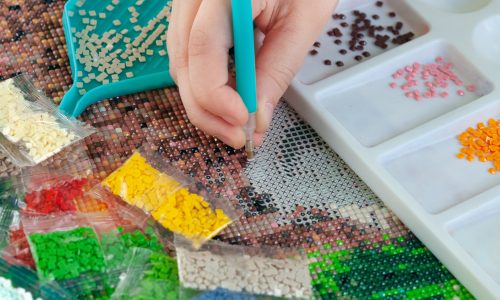The Best Watercolor Markers
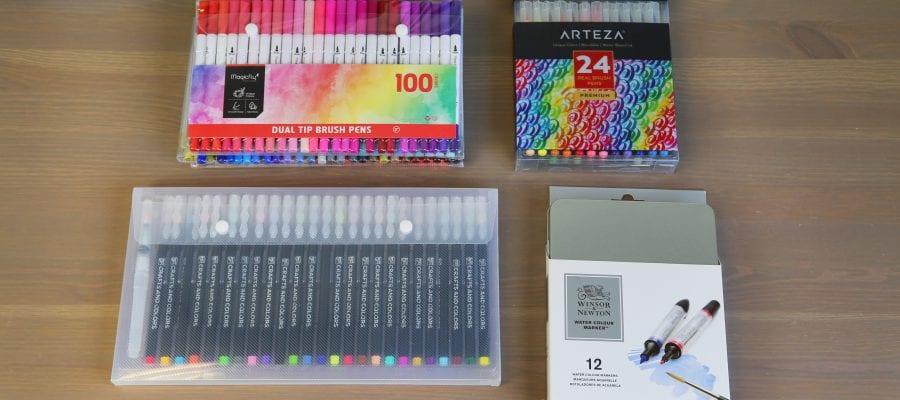
Our Review Process
Don't Waste Your Money is focused on helping you make the best purchasing decision. Our team of experts spends hundreds of hours analyzing, testing, and researching products so you don't have to. Learn more.
Our Picks For The Top Watercolor Markers
- 1. Arteza Real Brush Watercolor Marker Pens, 24-Count
- 2. Reaeon Flexible Nylon Tip Watercolor Markers
- 3. Chalkola Pre-Filled Watercolor Markers
- 4. Ohuhu Watercolor Brush Markers, 20-Count
- 5. Ohuhu 36-Color Watercolor Brush Markers Set
- 6. Kuretake Real Brush Watercolour Brush Pens
- 7. Chromatek Watercolor Brush Pens, 52 ct
- 8. Crafts & Colors Artist Watercolor Brush Pens Set, 26-Count
- 9. Magicfly Watercolor Dual Brush Pen Set, 100-Count
- 10. Winsor & Newton Water Colour Brush Markers, 12 ct
- 11. Genuine Crafts Watercolor Brush Pens
This watercolor marker set is one of the best sets of watercolor markers on the market today. The colors really pop and the brushes are smooth, making it easy to get great results.
Vibrant Watercolor DyesThis watercolor marker set is a great choice for its vibrant colors and ease of use.
Since these watercolor markers are made using non-toxic, acid-free water-based ink, they are a great choice for children who want to explore their creativity. They won't make a big mess and the markers allow for exploring a variety of different artistic designs. Each set includes 24 markers and has an affordable price tag that works for any budget.
Premium QualityThis watercolor marker set includes a bonus water brush pen for artists.
If you're searching for a watercolor marker set with rich colors, this box is an excellent choice. Each of the 28 markers feature fine tips that are also flexible. They work just as well for calligraphy projects as they do sketching nature scenes, which makes them a versatile pick.
Real Flexible TipsA bonus painting pad that works with both wet and dry media is included with this watercolor marker set.
Adults who love to relieve stress through art will find these watercolor markers are a true gift. The set comes with 20 brushes that have tips that are both soft and flexible. In addition to creating beautiful nature scenes, the markers also work well as calligraphy pens.
Most VersatileNot only is this watercolor marker set non-toxic, but it's also odorless.
Buying Guide
Creating smooth watercolor effects on a piece of paper or canvas has all sorts of calming effects and can bring simple peace and joy to the artist. Cleaning up at the end, however, can be a messy ordeal that is noticeably less soothing than the act of painting. Watercolor markers offer a chance to replicate all the brush strokes and paint effects of watercolor painting, but they come in a basic marker that has a cap on it. Use the watercolor markers to make detailed lines and create drawings that have more precision than your standard watercolor paintbrush can offer, then put the caps back on your markers and toss them into your bag for the easiest cleanup you can imagine.
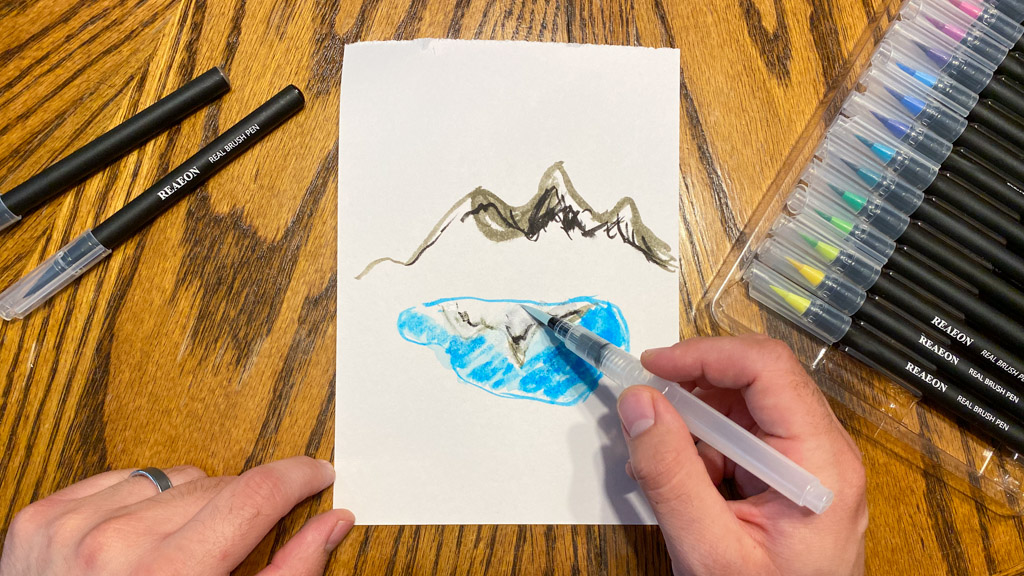
There is one big distinction that actually separates watercolor markers from traditional watercolor paints. Watercolor markers are actually full of dye and not the usual pigment that makes up the color of watercolor paints, according to Amy Markham, artist, art teacher and creator of Starling, a podcast dedicated to helping artists develop depth in their creative practice.
“Most watercolor markers on the market are not actually watercolor at all, although they can create a similar effect,” Markham points out. “Watercolor paint is pigment-based, where watercolor markers are dye-based.”
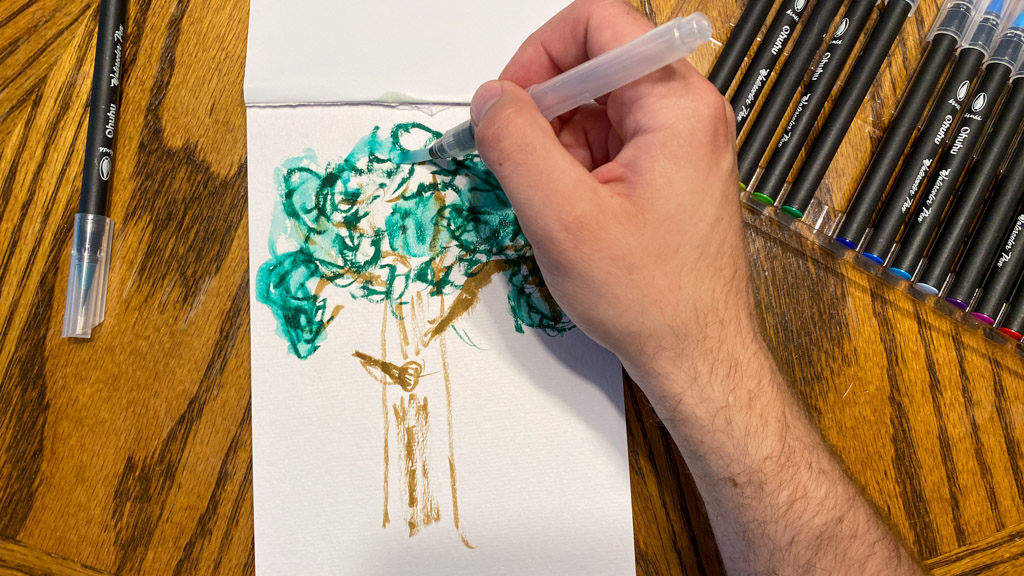
Each style of watercolor paint has its benefits, but the watercolor markers steal the show when it comes to fine details and vibrancy that the combination of watercolor pencils and paint can achieve. The two mediums of dye and pigment cannot necessarily be used together without thought, says Markham.
“Both are capable of creating interesting effects but only pigment-based ones can really be used along with traditional watercolor paints. If you want to use the dye-based markers with watercolor paint, it should only be used on top of the paint to detail and glaze,” Markham adds. “They should never be used under watercolor paint as it will not mix well.”
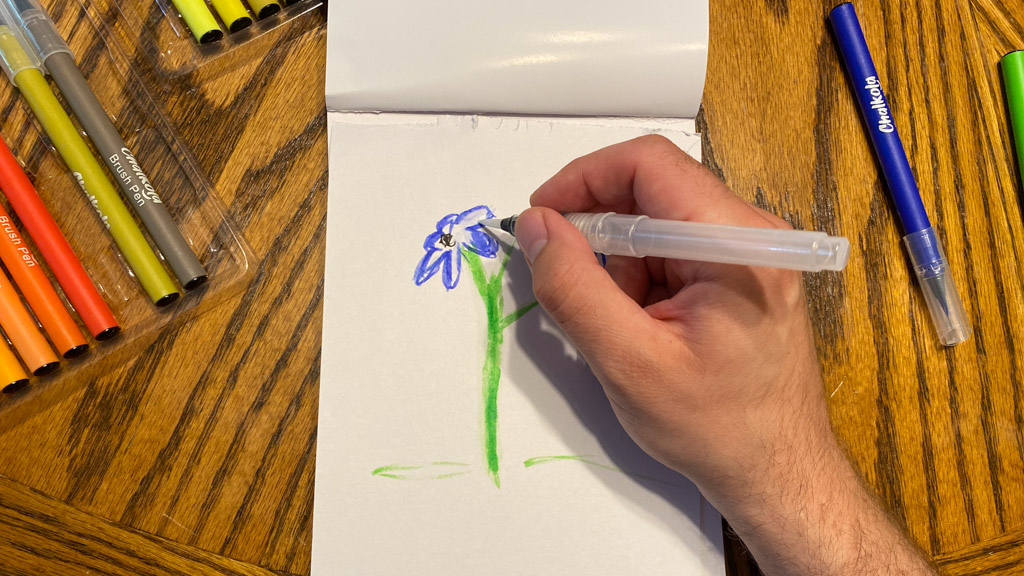
Watercolor markers, sometimes referred to as brush pens, have a soft tip that mimics a fine tip paintbrush. This tip is fed the wet color from within, but it behaves very similarly to a fine paintbrush when you begin using it. The easiest way to use them is to draw in the lines and colors where you want them and then come back with a bit of water on a clean brush to blend the fine lines down and create the style you imagine when you think of watercolor paintings. There is a useful water brush that comes with some sets that can be filled with clean water at the beginning of your session and used to blend colors without adding any further dye or pigment to them. With this handy water brush, you might not even need to have a cup of water on hand while making your watercolor painting — one less spilling hazard!
To add even more convenience to your artistic endeavors, there are kits that have dual tips on each marker. One end is a very fine tip that will help make highly detailed and precise lines in your work, which is no easy feat when using a traditional brush. The other end of the marker is a broader tip that helps fill in large swaths of color when you need it to. This combination of tips makes the markers highly versatile, which can be a great selling point for someone who is thinking of making this hobby as low-fuss as possible.
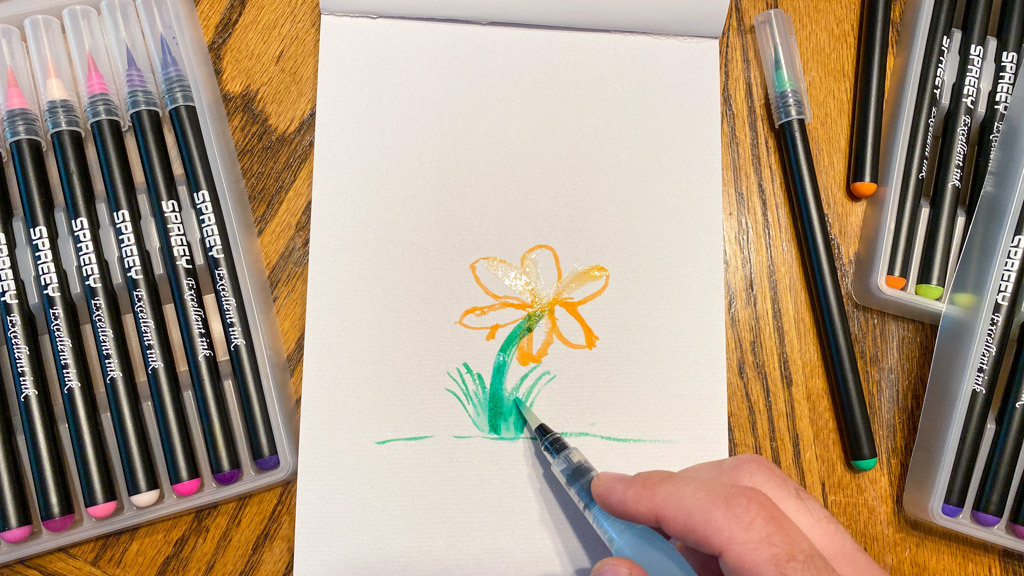
Even though they use a water-based dye instead of pigmentation, watercolor markers can still vary in their vibrancy of color, just like a pigmented paint does. The price of a set of watercolor markers is often related to how rich and colorful the dyes used are.
Consider a set of watercolor markers that actually uses pigment for its color. The set typically has dual-tip markers, which are a real treat to paint with, and vibrant pigment-based colors on the inside. This means that the paint coming from these markers can actually blend naturally with other watercolor paints on your paper or canvas. This set is a highly useful tool in fine-tuning the details within a watercolor painting while still allowing the different colors to mix nicely with each other.
Our Expert Consultant

Artist and art educator
Artist and educator Amy Markham is the creator of Starling, a podcast dedicated to helping artists develop depth in their creative practice. A graduate of Virginia Commonwealth University, Amy has been an art educator since 2001. Today, she teaches middle school art at a school outside of Memphis, Tennessee. Her personal artwork explores myth-making and symbolic understandings. Through her brand, Starling Creative Living, she leads others to explore art production as a method for enriching their life experience.
What to Look For
- Work slowly when starting with watercolor paints and markers, says Markham. “With most watercolor markers you will find that they are highly water-soluble and blend very easily, so start slowly,” advises Markham. “You can rewet most brands even after they dry to continue to blend and layer.”
- Watercolors are inherently wet and can soak through thin paper that isn’t suited for blending watercolor paints together. Find a paper or canvas that is designed for watercolors and you will get much better results when creating your art.
- Finally, when you are done with a piece of art that you hope to keep for years to come, Markham says to be sure you store it away from direct sunlight. “Remember that the art you create with these products will be more archival when stored away from light, or under UV-filtered glass,” says Markham.
More to Explore
Watercolor paints don’t have to be limited to paper or canvases. You can set up a fun craft night with watercolors and blank white pillowcases or t-shirts. The trick is to lightly soak the materials in water before painting them with the watercolor dyes. The result is a dreamy watercolor pillow or t-shirt that you created yourself!

